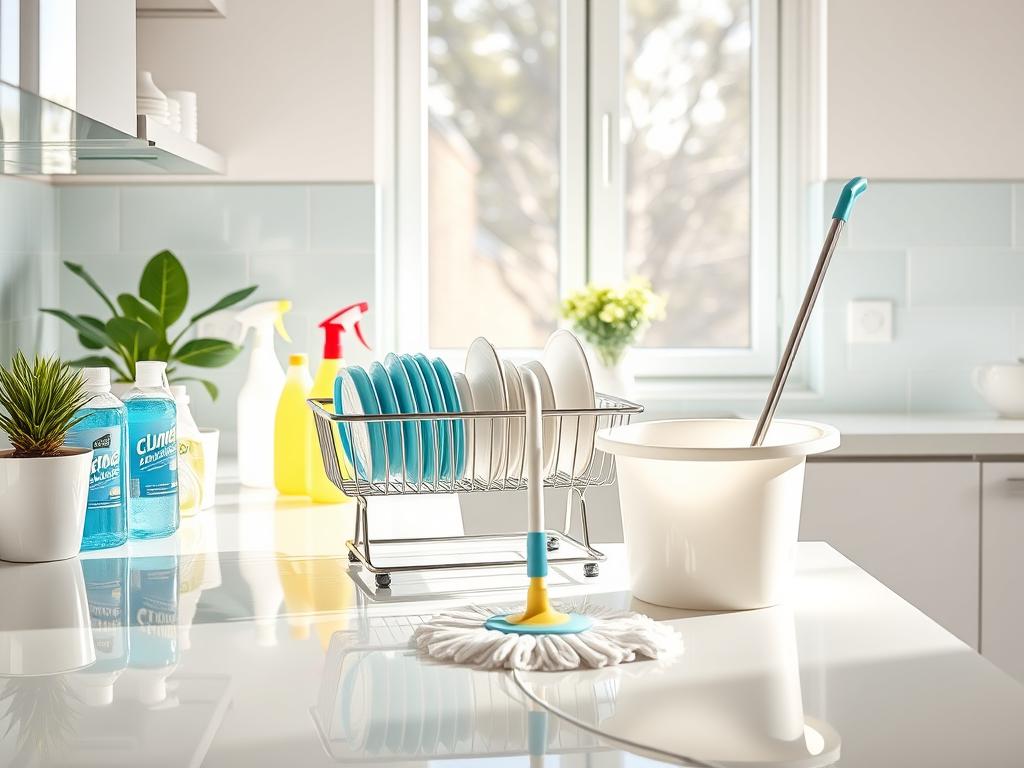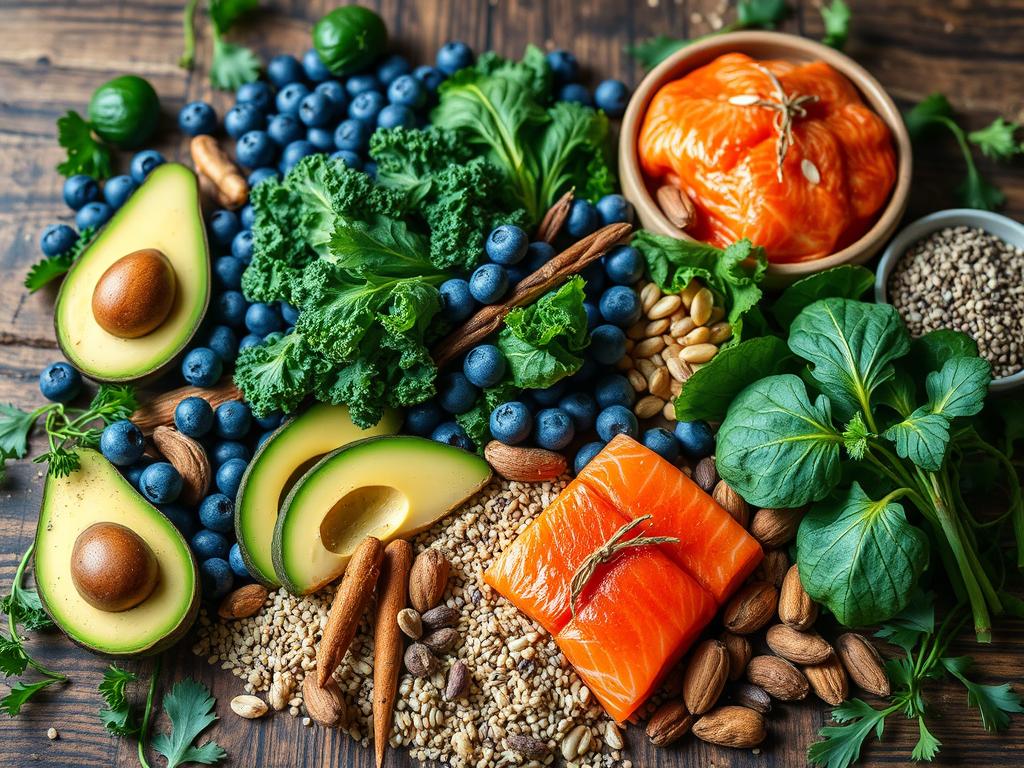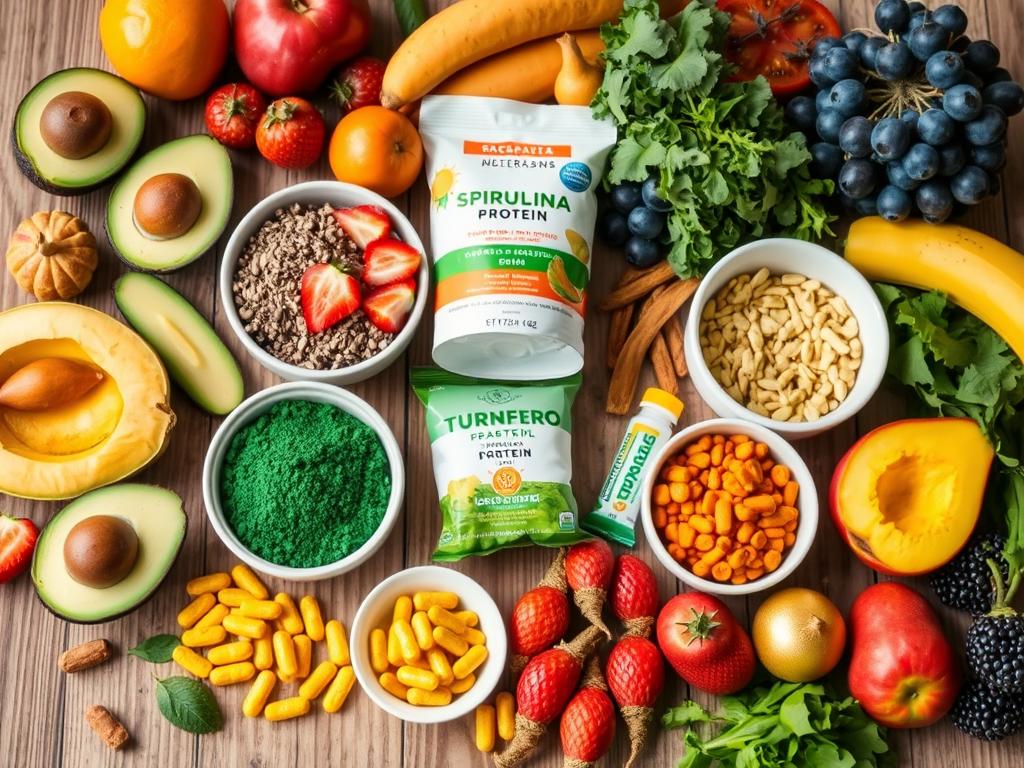Think back to a time when your kitchen sparkled—every surface gleaming, everything in its place. The aroma of fresh ingredients wafted through the air, inviting family and friends to gather around the table. This heart of the home thrives on cleanliness, not just for aesthetics, but for safety and well-being too. In this Ultimate Guide to Pro Kitchen Cleaning Tips, we will share efficient and effective strategies for maintaining that pristine kitchen environment that serves as the backdrop to cherished moments and nourishing meals. With the right kitchen cleaning tips, a few essential tools, and a bit of dedication, you can transform your kitchen into a welcoming haven for culinary creativity and family connection.
The goal of this guide is to equip you with comprehensive insights into professional kitchen cleaning techniques, from understanding the impact of cleanliness on your family’s health to learning how to tackle tough stains with ease. We’ll discuss everything from the necessary cleaning supplies to step-by-step routines, so you’ll feel confident in your cleaning endeavors.
As we dive deeper, you’ll discover that maintaining a clean kitchen is not a chore, but a lifestyle choice that echoes through your home. Whether you are preparing to bake mouthwatering dishes—like BBQ chicken drumsticks, which you can learn more about in this helpful link—or simply wanting to keep your space clutter-free, we’ve got you covered. Let’s get started on this transformative journey to a cleaner kitchen.
Key Takeaways
- The importance of a clean kitchen extends beyond appearance; it affects food safety and family interactions.
- Regularly replace refrigerator filters at least twice a year for better taste and odor removal.
- Utilize a steam cleaner for effective bacteria removal from floors.
- Organize your pantry by grouping similar items and discarding expired products.
- Incorporate natural cleaning solutions, like vinegar, into your routine for a fresh clean.
- Set a cleaning routine to establish consistency and make maintenance easier for all.
Understanding the Importance of a Clean Kitchen
A clean kitchen is not just about aesthetics; it plays a crucial role in overall health and safety. Understanding the significance of kitchen cleanliness, particularly in relation to foodborne illness prevention and creating a pleasant cooking atmosphere, provides insight into essential cleaning practices.
Why Kitchen Cleanliness Matters
Maintaining a clean kitchen is vital for several reasons. It helps prevent foodborne illnesses, an issue that affects approximately 1 in 6 Americans annually. Proper hygiene practices, such as washing hands before and after food handling, are essential in mitigating these risks. Factors like humidity, cooking frequency, and foot traffic can influence cleanliness, especially in specific regions like Lewisville. Here, it becomes obvious why kitchen cleanliness matters for both health and functionality.
Health Benefits of a Clean Kitchen
The health benefits of a clean kitchen extend beyond aesthetic appeal. Regular cleaning reduces allergens and pathogens lurking in food-preparation areas. This creates a healthier cooking environment for families. It is important to use high-quality cleaning supplies, including eco-friendly and non-toxic products, to enhance safety while cleaning. Adopting daily cleaning tasks, like wiping down surfaces and managing food waste effectively, contributes significantly to overall household health and well-being.
Environmental Impact of Cleaning Products
When discussing kitchen cleanliness, the environmental impact of cleaning products cannot be overlooked. Many traditional cleaning items contain harmful chemicals that can adversely affect the environment. Opting for biodegradable and environmentally friendly alternatives minimizes this negative impact while ensuring a safe space for food preparation. By choosing less harmful products, individuals can maintain a clean kitchen while contributing positively to environmental health.
| Cleaning Aspect | Health Benefits | Environmental Impact |
|---|---|---|
| Daily Cleaning | Reduces allergens and pathogens | Minimizes harmful waste |
| Regular Maintenance | Prevents foodborne illnesses | Promotes use of eco-friendly products |
| Proper Food Waste Management | Reduces spoilage and related health risks | Less landfill contribution |
Essential Kitchen Cleaning Tools and Supplies
Keeping a kitchen spotless requires the right tools and supplies. Utilizing a comprehensive kitchen cleaning checklist ensures no area is overlooked. Efficient cleaning depends on understanding which tools are essential for each task, as well as knowing the best kitchen cleaning practices to achieve desired results.
Must-Have Cleaning Tools
Every well-equipped kitchen should have a selection of must-have cleaning tools. These items make it easier to tackle daily cleaning tasks and deep cleaning challenges. Consider the following:
- Scrubber sponges for scrubbing pots and pans
- Microfiber cloths for delicate surfaces
- Broom and dustpan for quick floor cleanups
- Mop or vacuum for thorough floor cleaning
- Soft-bristled brush or old toothbrush for hard-to-reach spots
- Duster for ceiling fans and light fixtures
Recommended Cleaning Products
The right cleaning products enhance the effectiveness of your kitchen cleaning checklist. Some highly recommended options include:
| Product Type | Product Name | Use |
|---|---|---|
| All-Purpose Cleaner | Lysol | For surfaces like countertops and tables |
| Degreaser | Krud Kutter | For stovetops and greasy surfaces |
| Dish Soap | Dawn | For washing dishes and utensils |
| Glass Cleaner | Windex | For streak-free windows and glassware |
| Vinegar | Distilled White Vinegar | For natural cleaning and deodorizing |
Eco-Friendly Alternatives
There are eco-friendly cleaning options that align with best kitchen cleaning practices and contribute to sustainability. Simple DIY solutions such as vinegar and baking soda can replace many commercial products. Here’s how you can incorporate them:
- Vinegar: Use it for combined disinfecting and deodorizing.
- Baking Soda: Effective for scrubbing surfaces and tackling tough stains.
- Combination of baking soda and vinegar can clean drains and garbage disposals.

Step-by-Step Guide to Daily Kitchen Cleaning
Establishing a consistent routine with daily kitchen cleaning tasks contributes significantly to an efficient home. By using efficient kitchen cleaning methods, you’ll not only maintain a spotless kitchen but also prevent the buildup of grime that can require more time-consuming cleaning later. Incorporating kitchen cleaning hacks into your daily routine helps streamline the cleaning process.
Cleaning Counters and Surfaces
Start your day with a quick declutter of countertops. Remove any unnecessary items, then wipe down surfaces with a suitable cleaning solution. Frequent cleaning provides a clean slate and prevents harmful bacteria from accumulating. Pay special attention to areas like cutting boards and utensils, ensuring they are sanitized to promote food safety.
Maintaining Appliances
Keeping appliances clean extends their lifespan and functionality. For the microwave, create a DIY cleaner with vinegar and water, using a microfiber towel to tackle any splatters. A regular wipe-down with Bar Keeper’s Soft Cleanser on refrigerator fronts keeps them looking new. For glass stovetops, use Dawn PowerWash along with a scrub pad to remove stubborn stains effectively.
Quick Floor Cleaning Tips
Maintaining clean floors enhances your kitchen’s overall appearance. Start by removing any rugs and give the floor a quick vacuum. Following that, mop using a neutral pH floor cleaner to eliminate dirt and sticky residue. These quick floor cleaning tips are effective in conserving both time and energy, keeping your kitchen welcoming.
Deep Cleaning: Monthly and Seasonal Tasks
A clean kitchen is vital for maintaining a healthy home environment. Prioritizing deep cleaning tasks ensures that every corner of your kitchen remains spotless and organized. Incorporating the top kitchen cleaning strategies will simplify the process and make it more efficient.
When to Schedule Deep Cleanings
Setting a schedule for deep cleaning can make the chores feel less overwhelming. Aim for a routine that includes:
- Daily Resetting: Tidy up as you go by washing dishes, cleaning countertops, and putting items back in their designated places.
- Weekly Tasks: Designate time each weekend to sweep floors, empty trash bins, and maintain appliances.
- Monthly Chores: Wipe down the inside of your refrigerator, check for expired products, and tackle deep cleaning hard-to-reach areas.
- Seasonal Cleanups: Aim for thorough cleanings of your refrigerator, oven, and pantry items at least once a quarter.
Comprehensive Appliance Care
Maintaining your kitchen appliances is essential for their longevity. Regular deep cleaning tasks should include:
- Scrubbing Appliances: Use a multi-purpose degreaser like Bon Ami to ensure a spotless finish.
- Replacing Filters: Check appliance filters regularly to keep everything running smoothly.
- Greasing Moving Parts: Lubricate any stuck components to ensure efficient operation.
Cabinet and Pantry Organization
Keeping cabinets and pantries well-organized enhances kitchen functionality. Follow these kitchen organization tips:
- Clear Out Expired Goods: Monthly checks can prevent expired items from taking up valuable space.
- Dust Thoroughly: Wipe down cabinet tops, and deep clean frequently used items to maintain cleanliness.
- Inventory Dishware: Seasonal checks allow you to keep track of what you have and what needs replacing.

Stay on top of your cleaning game by following this comprehensive cleaning guide for effective deep cleaning tasks and reliable techniques. Adopting these practices will lead to a more organized and healthier kitchen environment.
To complement your cleaning routine, consider incorporating habits from healthy lifestyle articles that reinforce the importance of maintaining a tidy and well-kept living space.
Specialized Techniques for Different Surfaces
Maintaining the various surfaces in your kitchen requires specialized cleaning techniques for optimal results. Utilizing expert kitchen cleaning advice ensures that you can keep every surface looking its best while prolonging their lifespan. Each material has specific needs, so understanding the right approach for stainless steel, wood, glass, and ceramics is essential.
Cleaning Stainless Steel
Stainless steel appliances are a popular choice in many kitchens, but they can easily show fingerprints and smudges. To clean these surfaces effectively, use a mixture of vinegar and olive oil. Start by spraying the vinegar on the surface and wiping it down with a microfiber cloth. Follow this by applying a small amount of olive oil on another cloth to buff the surface, creating a shine and adding a protective layer against future stains. This simple technique is part of the expert kitchen cleaning advice that helps maintain the elegance of your appliances.
Care for Wooden Surfaces
Wooden countertops and cabinets require careful attention to avoid damage. Regular cleaning with a mild soap and water solution can keep them in good condition. For added protection, a mixture of beeswax and mineral oil can condition the wood. When applying, make sure to rub it in well and wipe off any excess. It is crucial to avoid soaking wooden surfaces, as excess moisture can lead to warping. Such specialized cleaning techniques ensure that your wooden surfaces remain beautiful and functional.
Dealing with Glass and Ceramics
Glass surfaces and ceramic items can accumulate grime and streaks over time. To keep them crystal clear, use a window cleaner or a vinegar-water solution, wiping with a lint-free cloth. For ceramic dishes or tiles, a dilute solution of baking soda and warm water can effectively remove stains while being gentle on the surface. This comprehensive approach offers reliable methods for sustaining the clarity and cleanliness of your kitchen. Additional information on deep cleaning different kitchen spaces can be found here.
| Surface Type | Cleaning Solution | Technique |
|---|---|---|
| Stainless Steel | Vinegar and Olive Oil | Spray vinegar, wipe with cloth, buff with olive oil |
| Wood | Beeswax and Mineral Oil | Apply with a cloth, rub in evenly |
| Glass | Vinegar-Water Solution | Spray and wipe with lint-free cloth |
| Ceramics | Baking Soda and Water | Apply paste, scrub gently, rinse |
Taking such care of different surfaces will enhance both the appearance and hygiene of your kitchen, leading to a healthier cooking environment. Utilizing these specialized cleaning techniques allows you to tackle specific challenges while keeping your kitchen in perfect order.
Tackling Tough Messes and Stains
Even a well-maintained kitchen can face tough stains and messes that require careful strategies for removal. With the right knowledge, anyone can conquer challenges like greasy buildups and unwanted food spills. Here are some effective kitchen cleaning tips and stain removal tips to handle these tough situations.
How to Remove Grease Stains
Grease stains can be stubborn and unsightly. To tackle them effectively, consider using a mix of baking soda and vinegar. This natural solution not only breaks down grease but is also environmentally friendly. Apply the mixture to the stain, let it sit for a few minutes, and then wipe it away with a microfiber cloth. For more persistent stains, a commercially available degreaser may provide the additional cleaning power needed. Always test any solution on a small area first to ensure it won’t damage your surfaces.
Dealing with Food Spills
Food spills can happen in the blink of an eye, creating potential messes in a kitchen. To manage these incidents, act quickly. Blot the spill with paper towels to absorb as much liquid as possible. For sticky residues, a combination of dish soap and warm water works wonders. Use a clean sponge to scrub gently, which will help lift away the food without scratching delicate surfaces. Reinforcing a cleaning routine that includes daily wipe-downs can make it easier to maintain a spotless kitchen.
Stain Removal on Fabrics
Kitchen fabrics such as dish towels and aprons are prone to stains. To effectively handle this issue, pre-treat the stain with a mix of vinegar and water. Allow it to soak for about 10 minutes before laundering according to fabric care instructions. For tougher stains, consider using enzyme-based stain removers, which are particularly effective against organic materials. Regularly involving family members in this process can help maintain a cleaner environment.

| Stain Type | Recommended Solution | Cleaning Frequency |
|---|---|---|
| Grease | Baking soda and vinegar | As needed |
| Food Spills | Dish soap and water | Daily |
| Fabric Stains | Vinegar and water soak | As needed |
Sustainable Kitchen Cleaning Practices
Adopting sustainable kitchen cleaning practices can significantly reduce environmental impact while maintaining a fresh and clean space. The following strategies advocate for minimizing waste, crafting DIY cleaning solutions, and selecting brands that prioritize sustainability.
Reducing Waste in Cleaning
Waste reduction in cleaning begins with the choice of materials. Paper towels lead to significant carbon emissions from deforestation and production processes. Instead, consider using reusable cleaning tools such as microfiber cloths and bamboo scrub brushes. These options not only reduce waste but also save money over time. Reusing packaging materials like jars and containers can further minimize waste in your kitchen. Composting food waste enriches soil for gardening and diverts organic matter from landfills, promoting a healthier environment.
DIY Cleaning Solutions
Creating your own cleaning products can be both fun and eco-friendly. Natural ingredients such as white vinegar, lemon juice, baking soda, and olive oil serve as effective substitutes for commercial cleaners. Homemade cleaners reduce reliance on harsh chemicals often found in conventional products, protecting both your health and the environment. Explore other eco-friendly practices to enhance your sustainable cleaning efforts.
Choosing Sustainable Brands
Selecting brands that prioritize sustainability is vital for adopting eco-friendly kitchen cleaning products. Commercial green cleaning options like Method and Mrs. Meyer’s offer effective alternatives that are gentler on the planet. Supporting these brands encourages more companies to adopt sustainable practices, leading to a larger impact on reducing the overall carbon footprint in cleaning. Implementing these practices fosters both a cleaner kitchen and a commitment to the environment.
| Cleaning Approach | Benefits | Examples |
|---|---|---|
| Sustainable Products | Reduces chemical exposure | Method, Mrs. Meyer’s |
| DIY Cleaners | Cost-effective, non-toxic | Vinegar, baking soda |
| Waste Reduction Techniques | Minimizes landfill waste | Reusable cloths, composting |
Maintaining a Clean Kitchen: Tips for Success
Establishing a practical and consistent cleaning routine is essential for achieving cleaning routine success in your kitchen. By setting aside specific times each day or week for various tasks—like cleaning surfaces or deep cleaning appliances—you’ll streamline the process and make it more manageable. For instance, starting from the top by dusting cabinets and light fixtures before moving down to countertops and floors helps prevent the need for re-cleaning surfaces. Planning and organizing your cleaning supplies ahead of time can significantly enhance efficiency.
Setting a Cleaning Routine
Creating a cleaning schedule tailored to your household’s needs will make maintenance a shared responsibility. Engaging all family members in cleaning tasks can not only lighten the load but can also instill a sense of teamwork. Implementing family kitchen cleaning tips can ensure that everyone understands their roles—whether it’s emptying waste bins when full or sweeping food spills. By taking time to communicate and divide responsibilities, every individual can contribute to keeping the kitchen clean and orderly.
Involving the Whole Family
Another important aspect of kitchen upkeep involves integrating proactive maintenance strategies. Regularly address high-touch areas like cabinet handles and light switches, which tend to accumulate grime. To maintain cleanliness effectively, don’t forget actions such as mopping floors after meals, cleaning the refrigerator weekly, and deep cleaning appliances monthly. By making cleaning an ongoing effort and practicing these maintenance tips, your kitchen can remain a pristine and welcoming environment.











